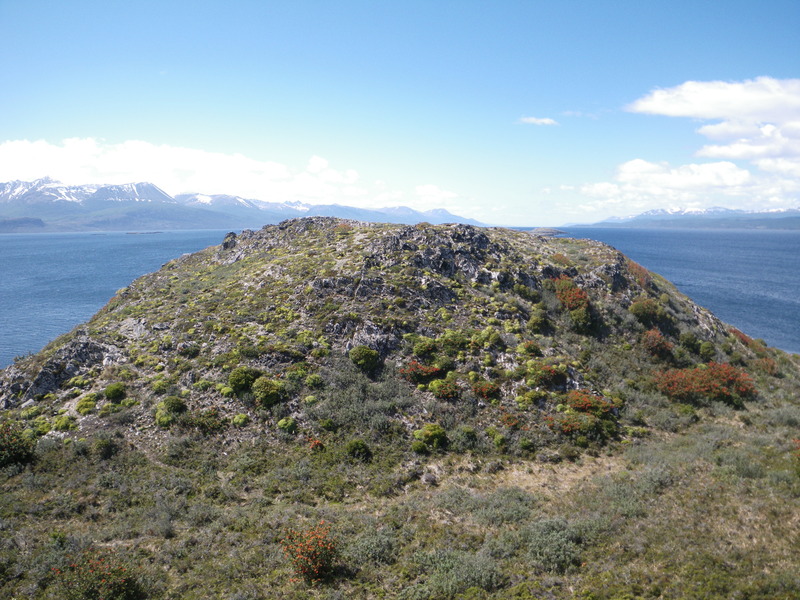
Ushuaia is in Tierra del Fuego, a large island at the very southern tip of South America, south of Patagonia and 3,000km south of Buenos Aires. Signs around town talk about this location being "Fin del Mundo", at the end of the world. The city is on the Beagle channel and surrounded by beautiful snow-capped mountains.





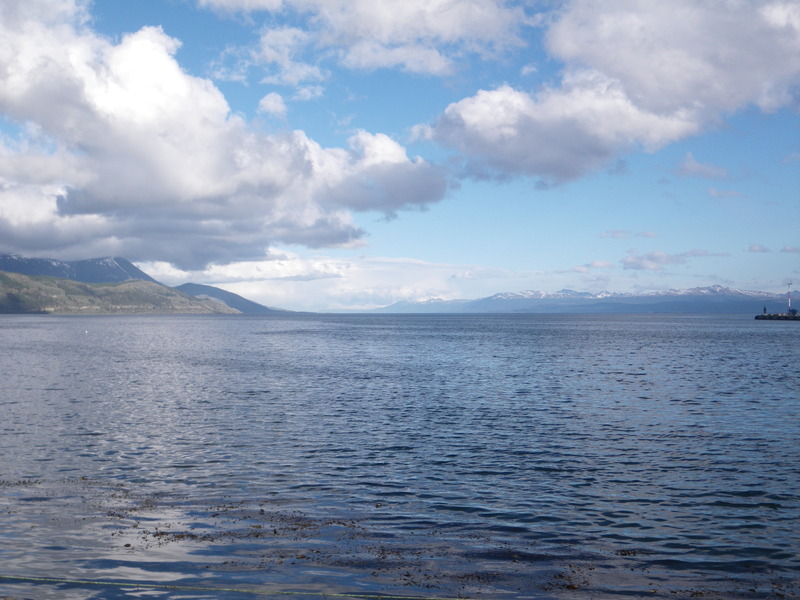
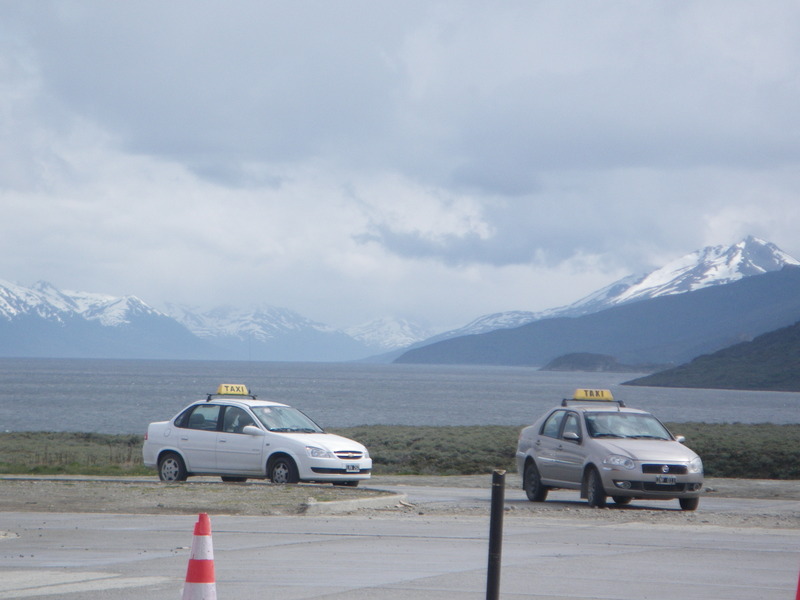

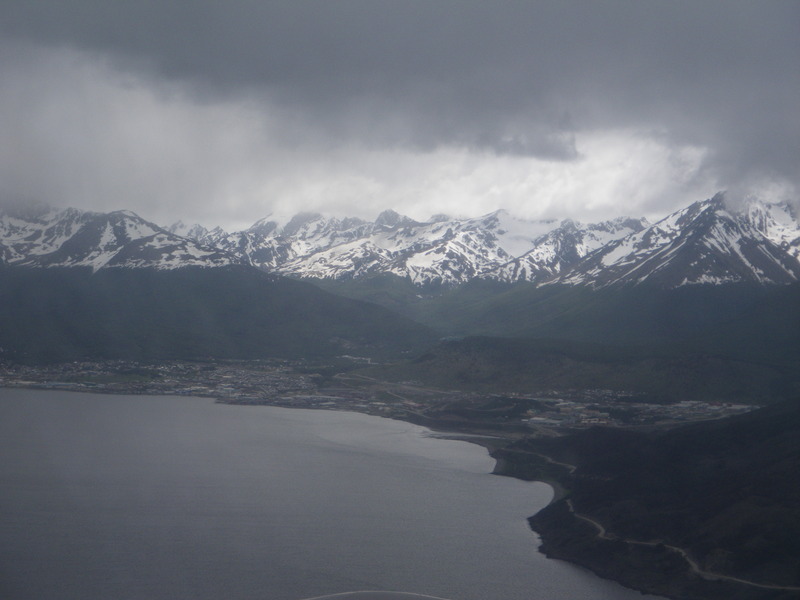

November is Spring in the Southern hemisphere, corresponding to May in the Northern hemisphere, but the weather here is not warm. It even snowed a few times. It is my understanding that Ushuaia frequently experiences all four seasons in a given day. In my own few days here, I feel I have experienced every season except Summer.




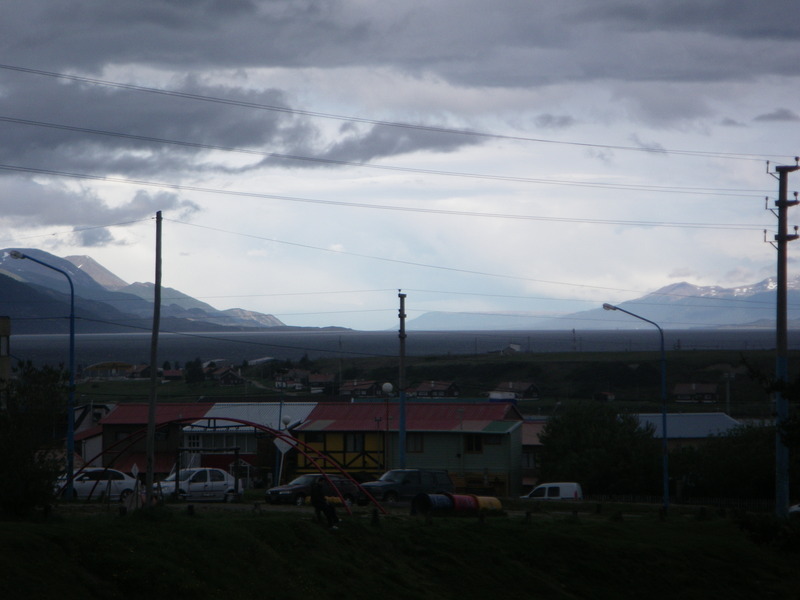
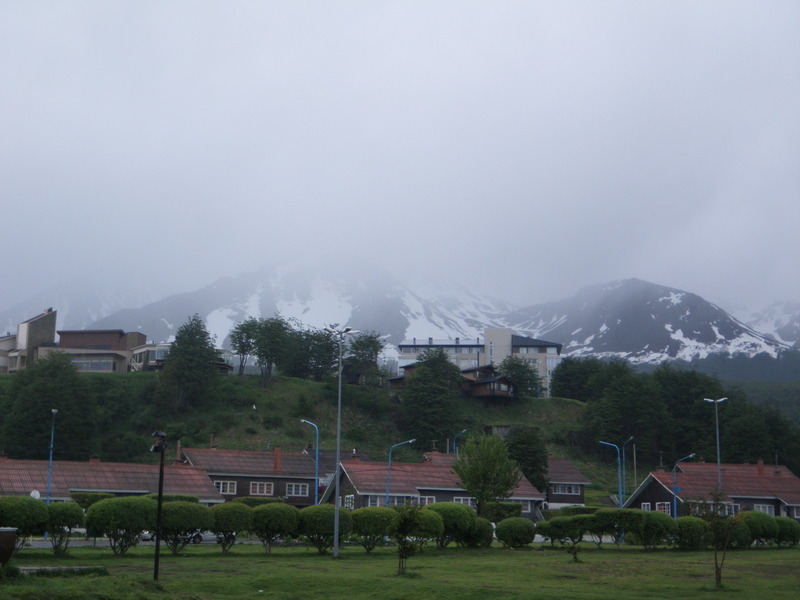
I even saw a (faint) rainbow.

Being near Cape Horn, the area around Ushuaia has had many shipwrecks (I counted more than 100 on a map). One of them, the rescue tugboat Saint Christopher, is visible from the waterfront downtown.
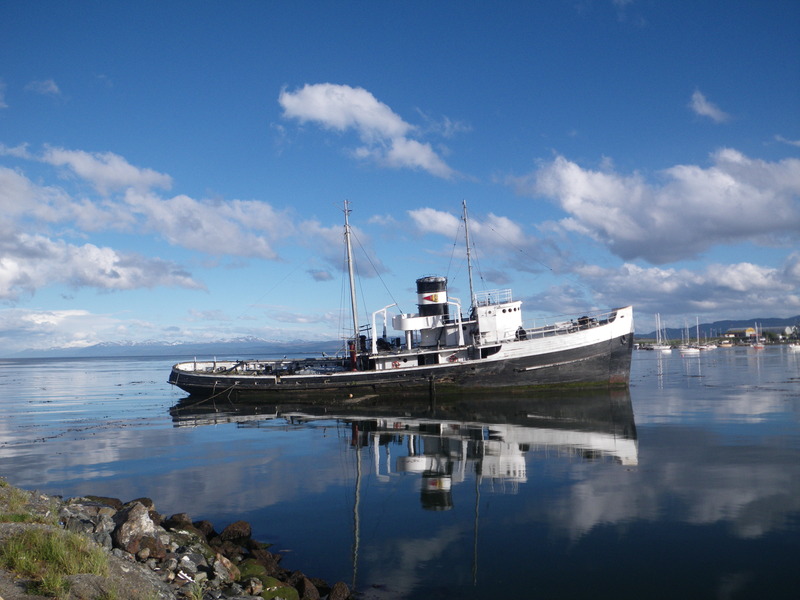

Ushuaia is an interesting town in itself. The post office has an interesting painting which reminds me of "The Scream", but with an indigenous theme. I like the contrast with the smiling mailman.

Most of the indigenous Yamana people in Southern Tierra del Fuego died, generally of introduced diseases, within 30 years after the arrival of the first missionaries in the 1870s, so "The Scream" may be appropriate.
Near the end of the 1800s, the government of Argentina wanted to settle the area, but few were interested. So, as the English did in Australia, Argentina started a penal colony in Ushuaia. The post office has a mural of this as well.

The old prison, the Presidio, is now a Maritime museum, but is large enough to house several other exhibits as well. Here is a reconstruction of a Yamana bark canoe, and a few pictures.




Elsewhere in Ushuaia is a small museum dedicated to the Yamana. It has a few harpoon tips and other implements, but otherwise mostly maps and explanations rather than original materials.


In the Presidio there are exhibits related to the prison, including a mock-up of a well-known political prisoner, Ricardo Rojas, sent to Ushuaia for three months in 1934. Unlike the transported convicts sent to Australia from England, the people sent to Ushuaia were able to return to the main part of Argentina after serving their sentence.


The maritime museum includes 1/100-scale models of many of the famous ships to visit this area, beginning with the Trinidad, one of the ships of Magellan. Magellan, the first European known to have seen Tierra del Fuego, gave it its name because he saw many fires on the island while he was exploring the Strait of Magellan.

While I was in Ushuaia, there was a 1-day strike (called "paro" in Spanish) throughout Argentina. Here is a march down Avenida San Martin, the main shopping street of Ushuaia.
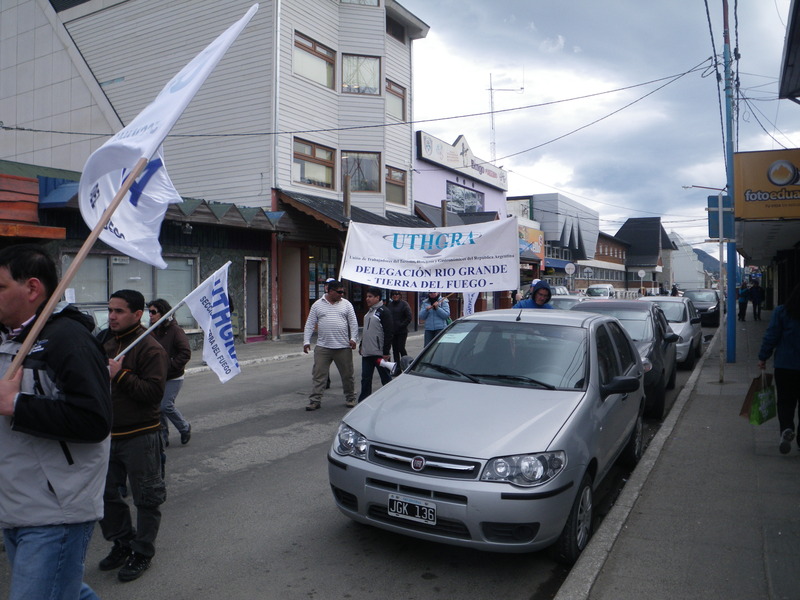


This is undoubtdedly the southernmost place I have ever been. Because it is so far South, Ushuaia has seen many explorers come through, on their way either between the Atlantic and the Pacific, or on to Antarctica. This sign shows the distances from Antarctica to a few towns in the Southern Hemisphere.

And this sign shows distances from Ushuaia to Madrid and Moscow as well as Antarctica.

Ushuaia is a relaxed town, including many fearless dogs.

The Beagle Channel is named after the english ship Beagle, which surveyed the area between 1828 and 1830, and on a second trip in 1832. The second trip, the ship had aboard Charles Darwin, and eventually visited the Galapagos islands on its way around the world.
Because of the variable weather, I was lucky to find a fairly calm day to take a boat tour on the Beagle Channel.
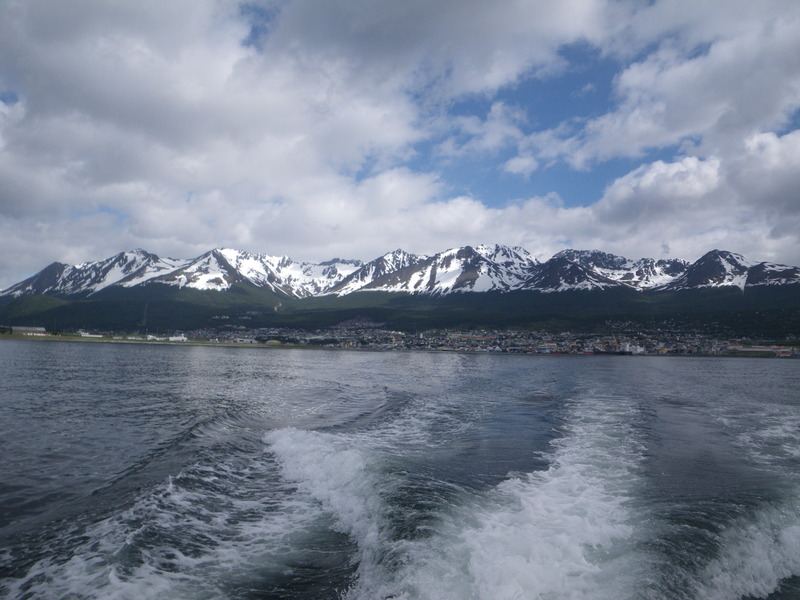





Many sea lions live in the Beagle channel. The big one in the next three pictures is a male.




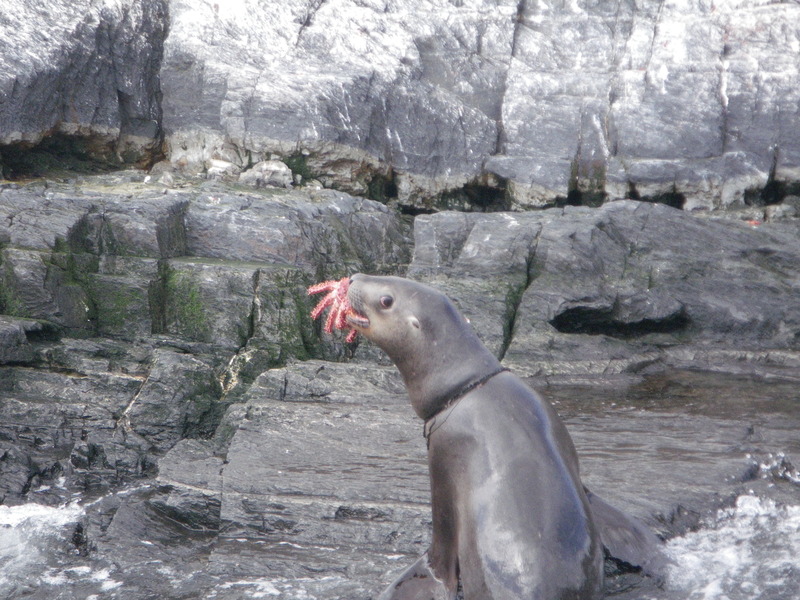


Overall, there were many sea lions on a fairly small rock.

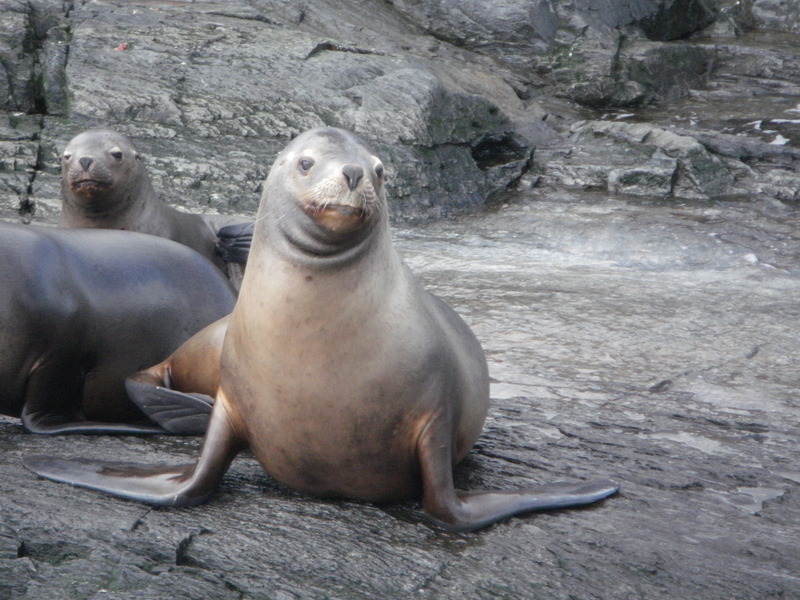


We also saw many seabirds, especially different kinds of cormorants.





During the glacial ages, the Beagle channel was a valley filled with a glacier 1,000m thick. Now that it is filled with seawater, it has many treacherous rocks and islets. One of the islets holds the lighthouse of Les Eclaireurs.
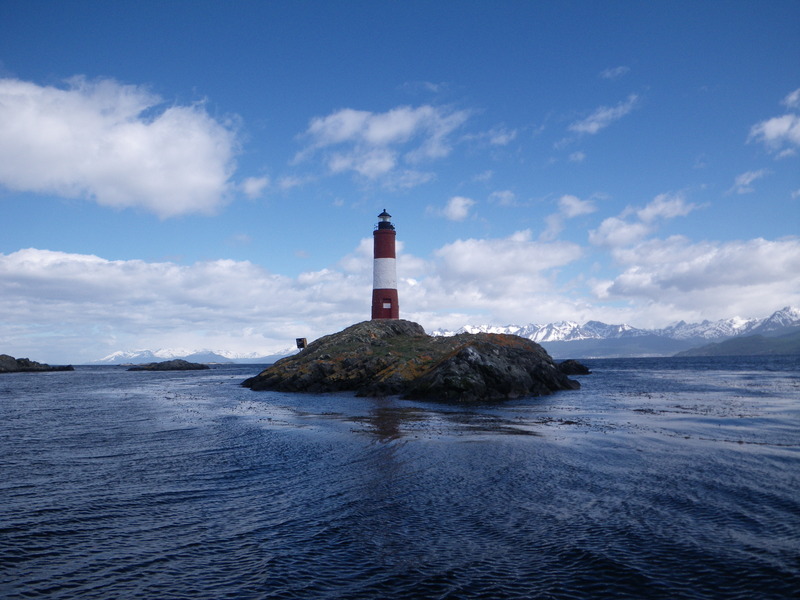

I am familiar with Jules Verne's novel "Le Phare du Bout du Monde", "The lighthouse at the End of the World". That novel takes place about 200km further east, on the Isla de los Estados.
The boat tour included a brief excursion ashore on a small island called Carelo, which is a protected natural area.

This small bush is called Chaura (probably Gaultheria mucronata).

This one is quite famous, and is called Calafate (Berberis microphylla). Unfortunately, it is not yet the season for the fruit, or I would have tried it.

The Notro (Embothrium coccineum) bushes were bigger than anything around them, and had beautiful red flowers. They put out sticky sweet nectar that feeds hummingbirds. I did not see any hummingbirds, but I did taste the nectar. I also saw a pair of wild geese.




One very special plant grows very slowly (1mm per year) and forms green mounds. It is called Chareta, or Bolax Gummifera, and belongs to the same family as carrots.
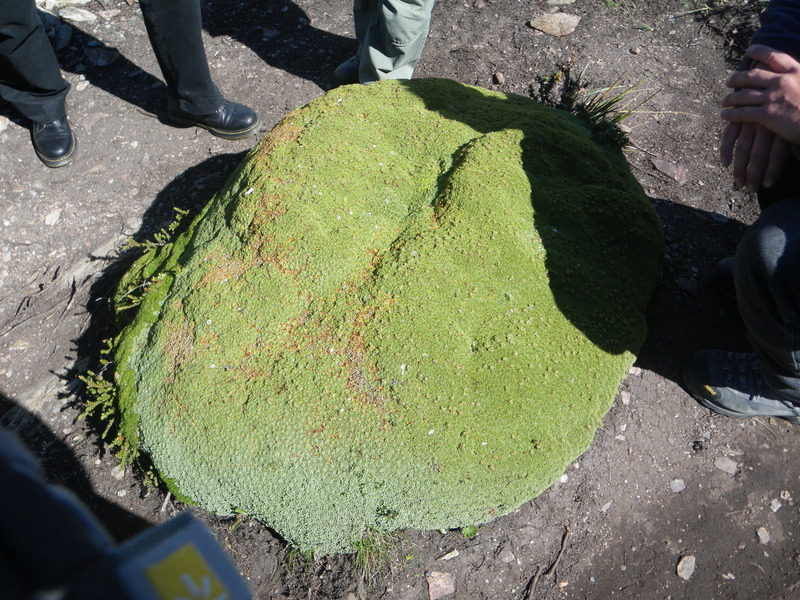
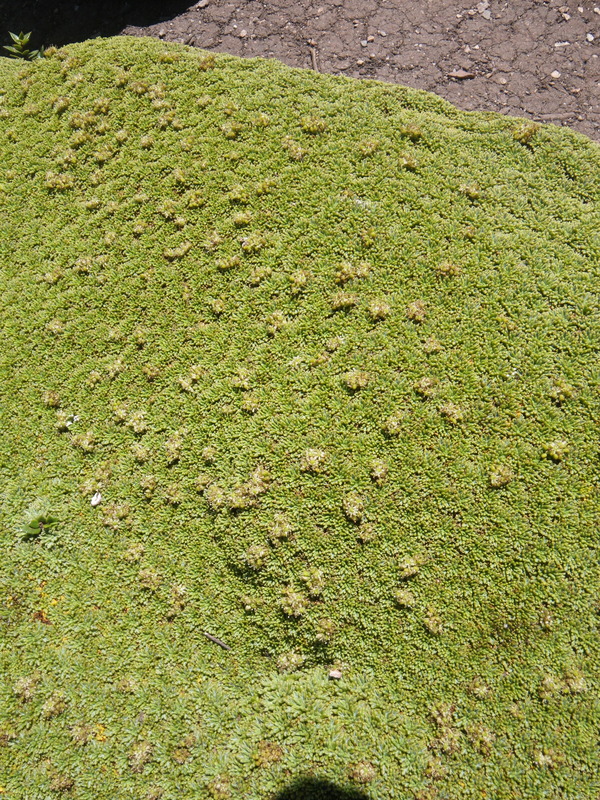

Because the plant grows very slowly, it is very vulnerable to abuse, both from humans, and from introduced animals such as muskrats.



Other plants grow in the sea. I believe this is kelp. Kelp forests in this area nurture a variety of marine life, including ultimately the sea lions and people such as the indigenous Yamana.

The Yamana were migratory, and a family group would stay on this or similar islands for a few days before moving on. Even though the weather is quite cold, they generally wore little or no clothing. Instead, they spent most of their time squatting either in their canoes, or in depressions behind mounds that sheltered them from the wind. In either the canoe or the depression, they would build a fire. In these pictures, our guide is demonstrating squatting in a depression sheltered by a small mound, and pretending to stretch his hands towards a fire.

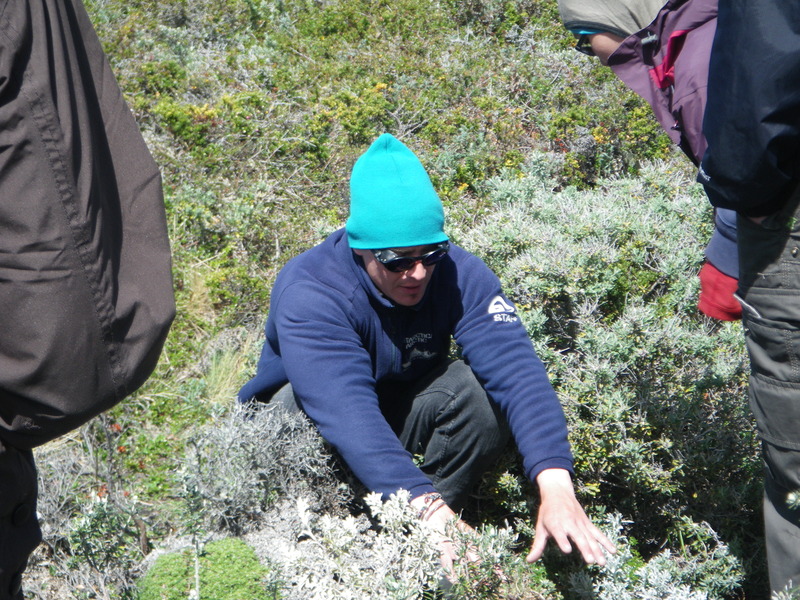
However small, Carelo island offers nice views of the surroundings.


